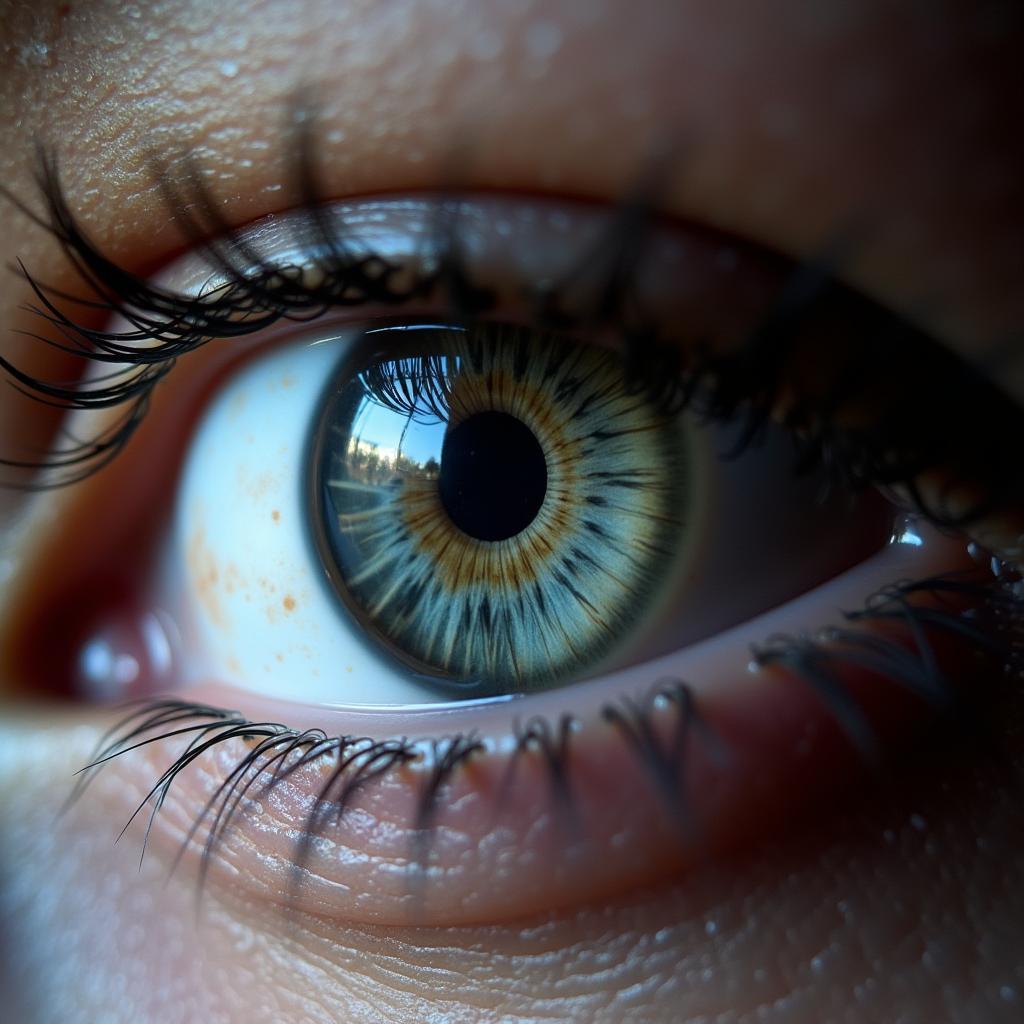When we think about eye color, shades like blue, brown, and green often come to mind. But have you ever stopped to consider the incredible variety within each color group? This is especially true for irises, the colored part of our eyes responsible for controlling how much light enters our pupils. So, How Many Colors Of Iris Are There?
The answer isn’t as simple as listing a few basic hues. While we can categorize irises into broad color groups, the truth is that there are countless subtle variations, making each person’s eyes genuinely unique.
Unpacking the Spectrum: More Than Just a Few Basic Colors
Many believe there are only a handful of iris colors, but the reality is far more nuanced. The spectrum is vast and influenced by factors like pigment concentration, light scattering, and genetic makeup.
Let’s explore some of the fascinating shades that fall under the main iris color categories:
- Brown: The most common iris color worldwide, brown eyes get their richness from melanin. The higher the melanin concentration, the darker the brown. You’ll find variations from light honey brown to deep, almost black, shades.
- Blue: Contrary to popular belief, blue irises don’t contain blue pigment. Their appearance results from low melanin levels and light scattering within the stroma (the front layer of the iris). This scattering effect makes shorter blue wavelengths more visible. There’s a spectrum of blue, from pale sky blue to deep ocean blue.
- Green: Green eyes, the rarest iris color, result from a combination of moderate melanin levels and the presence of a yellowish pigment called lipochrome. The interplay of these elements creates variations like hazel green, emerald green, and olive green.
- Amber: These captivating eyes get their golden or coppery hue from a higher concentration of lipochrome. Amber irises can range in shade from light gold with brown flecks to a rich, almost reddish-brown.
- Gray: Similar to blue eyes, gray irises have low melanin levels. The difference lies in the structure of the stroma, which scatters light differently, producing a grayish hue. Gray eyes can appear steely gray, silver-gray, or even bluish-gray.
 Close-up of gray eyes
Close-up of gray eyes
The Science Behind Our Unique Iris Colors
Understanding the science behind iris color reveals why there’s such a vast spectrum. Several factors contribute to the final hue we see:
- Melanin: This pigment plays a crucial role in determining eye color. High melanin concentration results in brown eyes, while low levels lead to blue or gray.
- Lipochrome: This yellowish pigment also contributes to iris color, particularly in green and amber eyes.
- Rayleigh Scattering: This phenomenon explains why blue and gray eyes appear the way they do. Light scattering within the stroma causes shorter blue wavelengths to be more visible.
- Genetics: Our genes play a significant role in determining eye color. Multiple genes interact to influence melanin and lipochrome production, resulting in the diverse range of iris colors we see.
“Think of it like painting,” explains Dr. Anya Patel, a leading geneticist specializing in pigmentation. “Our genes provide the canvas and the basic colors, but the final masterpiece is shaped by a complex interplay of factors.”
Beyond the Basics: Rarer Iris Colors and Patterns
Beyond the common colors, some people possess rarer iris variations that add to the fascinating spectrum:
- Heterochromia: This condition occurs when a person has two different colored irises (e.g., one blue eye and one brown eye) or two distinct colors within the same iris.
- Hazel: Hazel eyes often cause confusion as they seem to shift color depending on the light. They typically exhibit a blend of green, brown, and gold tones.
- Violet: While extremely rare, some individuals possess violet or purple-tinged irises. This phenomenon is often attributed to a combination of low melanin, light scattering, and the presence of red blood vessels in the eye.
 A person with heterochromia
A person with heterochromia
The Ever-Evolving Nature of Iris Color
Interestingly, iris color isn’t always static. While most changes occur during infancy and early childhood as melanin production stabilizes, certain factors can cause subtle shifts in iris color throughout life:
- Age: As we age, the pigment cells in our irises can change, potentially leading to slight color variations.
- Lighting: The way our eyes appear can change dramatically depending on the lighting conditions.
- Mood: Our emotions can influence pupil size, which can, in turn, affect how much light is absorbed by the iris, leading to subtle color shifts.
- Health Conditions: In some cases, specific health conditions can cause changes in iris color.
Conclusion
So, how many colors of iris are there? While we can categorize them into broad groups, the reality is far more intricate. The interplay of pigments, light scattering, and genetic factors creates a mesmerizing spectrum of colors, making each person’s eyes truly one-of-a-kind. From the common to the rare, the diversity of iris colors serves as a stunning reminder of the beauty and complexity of the natural world.
FAQs
Can two brown-eyed parents have a blue-eyed child?
Yes, it’s possible. Eye color inheritance is complex, and recessive genes for blue eyes can be passed down from generations.
Do people with lighter eyes have more sensitive vision?
People with lighter eyes may be slightly more sensitive to bright light due to lower melanin levels in their irises.
Can I change my eye color permanently?
While colored contact lenses offer a temporary solution, no safe and effective methods exist to permanently change iris color.
Are there any health risks associated with specific eye colors?
Certain eye colors may be associated with a slightly higher risk of specific health conditions, but more research is needed to confirm these links.
What is the rarest eye color combination?
Green eyes are considered the rarest color overall, while heterochromia (two different colored eyes) is a rare condition.
Looking for more insights on the world of colors? Explore our other articles:
- Are there colored prescription contacts?
- What color eyes are diamond in Germany?
- What color is Irish green?
Do you have other questions about eye color, vision, or anything related to the fascinating world of colors? Contact us! Our team of color experts is always ready to help:
Phone: 0373298888
Email: [email protected]
Address: 86 Cầu Giấy, Hà Nội
We have a dedicated customer support team available 24/7 to assist you.

